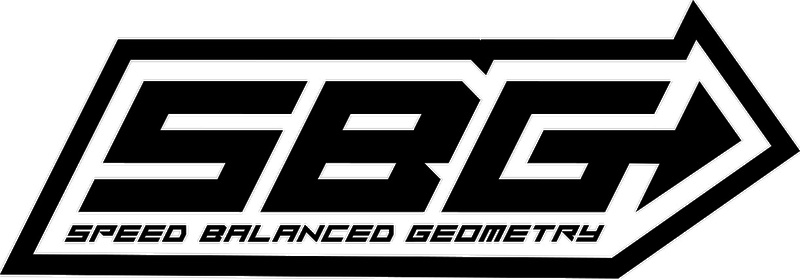Lars N Bars Explains Transition's SBG Geometry - Video
Transition Bikes introduces Speed Balanced Geometry
A different approach.
What is it about the human connection to the bicycle that brings us so much joy? How can such a simple mechanical device mean so much to so many of us? What if it was possible to heighten that connection? What would it take, what would it mean and how would you achieve it?
Imagine a dream where you could ride without thinking about what your front wheel is doing. You stopped having conscious thought about whether it had traction or not, instead you just intuitively knew. In this same dream your bike could do exactly what you wanted it to at whatever speed your were moving. At high speeds it carved stable turns with supreme grip, and at slow speeds it was nimble and precise to maneuver tight turns. This was our dream.
In the search for a better handling bike, we started by asking some simple questions. Why are mountain bikes becoming longer and slacker? The obvious answer is stability. Why is this good? It makes the rider feel safer and creates a more stable chassis at higher speeds or steeper terrain. Longer and slacker comes at a cost however, and that cost is realized at slower speeds or flatter terrain where the front wheel is too far ahead of the rider. This inhibits the rider's ability to properly weight the front wheel. What if it were possible to have a mountain bike that did all of this well?
bal·ance
noun
1. an even distribution of weight enabling someone or something to remain upright and steady. "slipping in the mud but keeping their balance"
Inspired by this dream, late in 2015 we initiated a research program led by our Blue Balls Development Team to discover ways we could make our current bikes handle even better. We began an extensive test cycle with different variations of fork offset and geometries. Why you ask?
In the last 5 years, your mountain bike has changed in in many ways. Your wheels have likely gotten bigger. Your frame has gotten longer. Your head tube has gotten slacker. Your suspension has improved. Your stem has gotten shorter and your bars have gotten wider. And you likely have a remote dropper seat post opposed to a straight post. Your components have improved in ways that have allowed you to ride easier, farther and harder. Yet, the there are some things that haven't been updated with the rest of these improvements. One of these things is steering trail.
Trail is one of the dimensions that relates to particular steering feel and handling characteristics. Current trail figures fall between a regular set of parameters depending on wheel size and bike suspension travel. The thing is, this range of trail is based on an old legacy of 26" bikes with outdated geometry; steep head tube angles, shorter reach and top tube, longer stems and skinnier handlebars.
Why shouldn't this evolve with the rest of your bike?
Transition SENTINEL with SBG technology. Coming this fall.
The Tech
Frame sizing - Our SBG system utilizes frame reach measurements that are longer than our current models. The SBG system is designed to be used with a 40mm stem, which equates to a modest total increase in reach when compared to our current models which use 50mm stems. Our SBG system additionally includes steeper seat tube angles which aid in climbing traction and reduce seated sag when climbing. These two changes bring the rider more forward in the chassis into a more central location between the front and rear tire contact patches, which greatly increases traction.
Head tube angle - SBG integrates slacker headtube angles which allow the fork to absorb impacts better on all angles, and positions the front wheel further forward in relation to the handlebars. As you approach obstacles in the trail a steeper head tube angle has a more vertical suspension path. This reduces the forks ability to properly absorb impacts and generates deflection. A slacker headtube angle positions the fork at a better angle of approach to absorb impacts which reduces deflection. Additionally, slacker headtube angles reduce dive while increasing rear wheel grip under heavy braking.
Fork offset - SBG is designed to be used with a fork offset that is shorter than traditionally used per wheel size. The shorter fork offset brings the front axle more rearward and under the rider which further increases front tire traction. This works in unison with the shorter stem length to provide a more direct steering input and dramatically enhances connectivity to what is happening with the front wheel. The shorter offset also brings the front wheel more under the rider which balances the effects of a slacker head angle. Our SBG system creates a longer trail figure than standard, used in a way that eliminates the negative side effects.
If you were to implement any of these changes independently you would see negative handling effects, but when executed together each change compliments the other which creates a dramatically different handling bike. SBG ensures the bike maintains low speed agility, increases front wheel traction, and proper rider weight balance while actually increasing confidence in steep terrain and at high speeds. With SBG, a slacker head tube angle is combined with a reduced offset fork to eliminate a vague feeling front wheel. This improves front to rear weight distribution on the bike, which is often out of balance on long and slack bikes. One of SBG's greatest benefits is that it creates a steering feel that is highly dependent on wheel speed.
At lower speeds the bike is easy to redirect, responds easily to steering inputs, and reduces front wheel wander when climbing. As the wheel rotates faster the bike becomes more stable, and less energy is required to keep the bike tracking straight. The rider is encouraged to lean into corners. SBG also reduces under and over steer, front wheel push, and improves front wheel traction in flat corners and off camber sections. Our SBG system provides more stability at high speed, more agility at low speed, improved traction, control and confidence for riders at all speeds.
What does this ultimately mean for you? More control, more confidence, more party.
Author Info:
Must Read This Week
Sign Up for the Pinkbike Newsletter - All the Biggest, Most Interesting Stories in your Inbox
PB Newsletter Signup







 Member since Feb 17, 2009
Member since Feb 17, 2009
The big question is how far can it be pushed. I think the only people who have found the limit is the Mojo guys - they're down at about 61-62 degrees with 29F 275R and massive wheelbases on their trail bies. I think it is going to take the rest of the industry a long time to get to this point which they may never do.
This geo setup has me seriously interested. Makes a lot of sense, I wonder how long until the big guys are there. 3 years?
Higher trail numbers = slower steering
Lower trial numbers = faster steering
Going slacker increases trail which is good for downhill but results in slower more cumbersome steering in slow speed situations like climbing. As bikes have gotten slacker higher fork offsets have be employed to bring trail number back down. For example, since we've seen a lot of 29ers going slacker while increasing to a 51mm offset (since Trek's patent on G2 geometry has expired) so the steering doesn't get obnoxiously slow.
Transition is going the other way: even slacker HA with reduced offset resulting in much larger than normal trail numbers. Won't that make it slow and cumbersome for slow speed stuff like climbing?
Not hating... Just confused because this seems like the opposite of what we've seen in the last few years. I would love to try it and see how it feels in the real world.
I think at a certain head tube angle it starts doing the opposite. I barely understand any of it but that is what I get from this bikeradar article.
1) Trail value (shorter == faster)
2) Front center (shorter == faster)
3) Head angle (higher == faster)
4) Stem length (shorter == faster)
5) Steering offset (longer == faster, but less natural as you go longer)
What Transition R&D guys have done is:
1) decrease the front center by shortening fork offset (+1 for faster steering)
2) shorten the stem length (+1 for faster steering)
3) slacken the head angle (-1 for steering)
4) increase the mechanical trail by both slackening the HA and shortening the offset (-1 for steering)
An overall, non-detailed look would tell you that they haven't made steering outrageously faster or slower, but that they came across a better combination of the above 5 variables that are all interconnected.
I would suggest, even if these SBG informed designs did use a short front centre, which they don't, this would only result in an ill-propotioned bike with sub-par steering.
I am unconvinced by Transition's advocacy of reduced axle offsets. Increasing offsets as the steering angle gets slackened has been the pattern in the past and it made a lot of sense.
I will not be happy to quietly accept Transition's counterintuitive claims concerning fork offsets without seeing those claims tested publicly. Testing the claims wouldn't be hard. Just swap in a long travel 29er fork with a standard offset (51mm) and compare. Also, swap in a Lefty Supermax (60mm offset for the 29er fork) for good measure (admittedly this might be impractical because the 29er Supermax is in a lesser travel class with a reduced axle to crown dimension but some jerry - rigging might be possible). That should give a range of experimentally interesting results to confirm whether there is anything to the Transition claims about offset or not.
Note:
i) A high flop value will indicate a tendency to autosteer through corners and a degree of resistace through the steering to making direction changes or switching lines while cornering. Good flop values will fall within a relatively narrow band. The higher values within that band support steering stability, the lower numbers support steering agility.
ii) Inceasing offset normally results in reduced trail (and mechanical trail) as well as reduced flop.
tl;dr, I have no idea what I'm talking about as I have yet to test these things myself. I am just happy/glad that there is someone/company in the industry that is focusing on these inconspicuous aspects of mountain bikes & I would be stoked to try it because it may turn out that it is better for human biomechanics on long-legged mountain bikes on uneven terrain.
I also thought about installing an offset head angle cup but would not like to loose that helpful slackness in the steeps.. this would just be perfect!!
My comment was more to aireek not being happy with the sizing. I've bought and sold many frames due to how badly they fit, it's tough finding good frames that suit tall people and the smuggler at least is one of the good ones that doesn't ride like a 'gate'. I've not had much time on a patrol so I can't comment on the difference to the smuggler though.
I think I can put a shorter stem on it, make it a little slacker, decrease the offset of my fork, and give it to my 5'7" wife. An SGB Patrol
Can't do anything about seat tube angle, though :/
lol
Does this mean we're going to see shorter offset 27.5 forks?
42mm is the offset of a current 27.5 Lyrik.
So, yes, we can only assume that this will translate over to the Patrol and Scout eventually. Then we'll likely see somewhere between 37-40mm offsets (typical of a 26" fork) and at least a degree slacker HA on each as well.